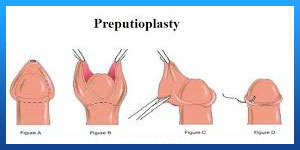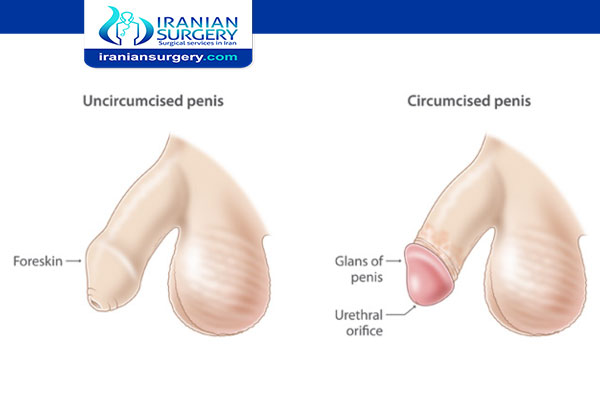Partial Circumcision
What is a Partial Circumcision?
Circumcision is a procedure in which the foreskin is surgically removed. The foreskin covers the head (or glans) of the penis and is often removed at birth for personal or religious reasons. This is also called a full circumcision.
In a partial circumcision, only part of the foreskin is removed.
In many cases, only the topmost portion of the foreskin is removed, exposing the tip of the penis but leaving the bottom, or corona, of the penis head covered by the remaining foreskin tissue.
Read more about : Penile implant
Read more about Virgin tightening surgery before and after
Before Partial Circumcision
What are the benefits of this procedure?
Partial circumcision may be done instead of a full circumcision for various reasons. You may simply want to keep your foreskin for personal or aesthetic reasons, or you may feel uncomfortable removing your entire foreskin, especially if you’ve had it your whole life.
Partial circumcision may not always be an option. If your foreskin has become stuck due to the formation of scar tissue, you may need to have the entire foreskin removed. This is often a complication of phimosis, balanitis, or infections that occur underneath your foreskin.

. Phimosis treatment
Partial circumcision is sometimes done to treat phimosis in young boys or men when other treatments, such as steroid ointments or creams, haven’t worked.
Phimosis happens when your foreskin can’t be retracted from the head of your penis. It may feel tight, as if there’s a ring around the head of your penis that’s preventing you from pulling the foreskin back. Paraphimosis, another form of this condition, happens when the foreskin gets stuck in the retracted position and is unable to cover the head of the penis.
Phimosis is normal in young boys who have foreskins, but the foreskin usually becomes retractable after a few years. By 7 years old, 93 percent of boys can retract their foreskins.
As you get older, being unable to pull back the foreskin can make it difficult to urinate or clean the skin underneath the foreskin. This can lead to a buildup of smegma. Smegma is a collection of dead skin cells and oils that are naturally shed from the penis skin. Smegma buildup can cause phimosis to get worse, leading to pain, irritation, and infection. Phimosis can also cause balanitis, or swelling of your penis glans.
Read more about : Phalloplasty
Read more about : What is Penile Torsion?
What are the risks of partial circumcision?
Few risks are associated with a partial circumcision. You usually won’t notice any difference in the pleasure you feel when you have sex, although sensation may be slightly reduced.
Possible complications of a partial circumcision include:
. Bleeding that won’t stop
. Infection around the surgery site
. Excessive penis pain or tenderness
. Stitches that won’t dissolve
. Recurring phimosis or balanitis that requires more foreskin tissue removal
During Partial Circumcision
How is a partial circumcision done?
Your doctor may ask you to fast for about six hours before the procedure. You may also need to stop taking certain medications, such as blood thinners, for at least 24 hours.
Partial circumcision may be done under local anesthesia. This means that only the penis and the surrounding areas are numbed. You can also have the procedure done under general anesthesia, letting you remain asleep during the entire procedure.
When you’ve received anesthesia and entered the operating room, your doctor or surgeon will ask you to lie down on an operating table. Then, your doctor:
- Cleans the penis and puts sterile drapes around it.
- Uses a skin-marking pen to mark an area on the foreskin indicating how much of it will be removed. In a full circumcision, the entire foreskin is removed at its base on the shaft of the penis.
- Uses a scalpel and other surgical tools to cut the intended amount of foreskin off the penis. If the procedure is being done on a baby, your doctor may use a clamp or bell-shaped tool to lift the foreskin away from the penis head.
- Uses thermal cautery tools that employ heat to stop any areas of bleeding after the foreskin has been removed.
- Stitches the skin back together with dissolvable stitches.
Read more about : Penile Curvature Deformity
Read more about : Penile Curvature
Read more about : Chordee
After Partial Circumcision
What’s recovery like from this procedure?
In most cases, you’ll be able to go home the same day as the procedure. Your doctor may prescribe you a medication such as acetaminophen (Tylenol) to manage any pain and discomfort.
Your penis will be covered in a dressing that will be ready to remove after about 24 hours. Your penis will fully heal from the procedure in about six weeks. A baby’s penis will recover after about 7 to 10 days.
While you’re recovering, your doctor will recommend you do the following:
. Rub petroleum jelly on the surgery site to reduce irritation from the penis rubbing against underwear or clothes.
. Wash the penis a few times each day with warm water after the dressing comes off.
. Don’t lift anything over 10 pounds for at least a week.
. Don’t have sex for at least four weeks after the procedure.
. Wait for the stitches to dissolve or fall out. This takes about two to three weeks.
. Don’t worry about the way your penis looks at first. It can take about six weeks for it to fully recover.
See your doctor right away if you notice any of the following:
. Pain that doesn’t diminish with pain medication
. Excessive bleeding from the surgery site
. Abnormal, foul-smelling discharge from the surgery site
. Swelling that won’t go down
. Difficulty peeing or not being able to pee at all
Outlook
Partial circumcision is a safe, quick procedure that can be done to treat several uncomfortable conditions that affect the penis. It’s also a relatively safe way to change your penis appearance if you feel dissatisfied with the way your penis looks.
Source:
. https://www.healthline.com/health/mens-health/partial-circumcision


